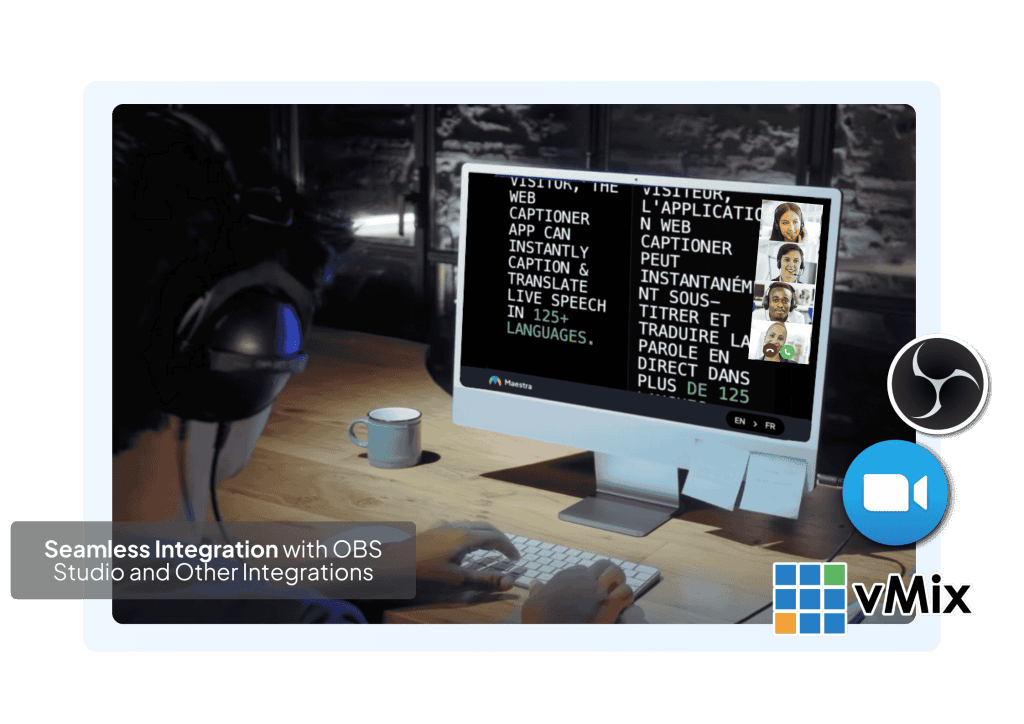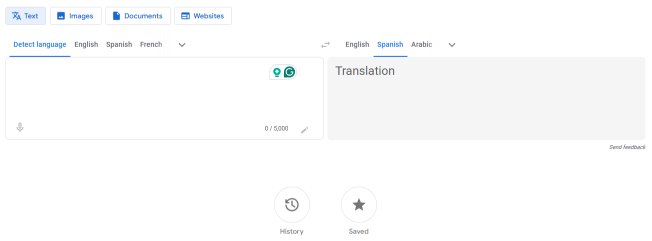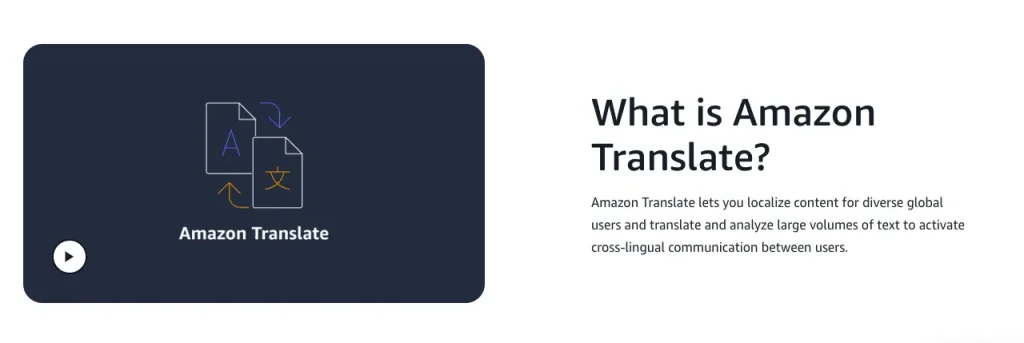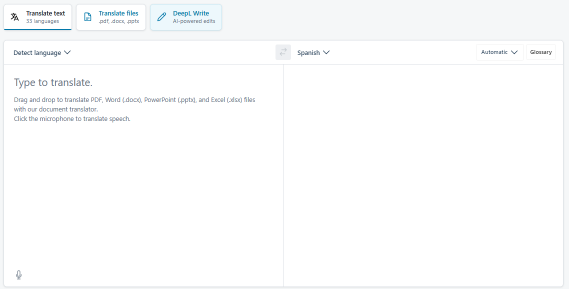5 Best AI Translation Tools (Free & Paid)

If you're looking for faster, more accurate ways to communicate across languages, the right AI translation tool can help you connect with more people and optimize your productivity. Yet with so many choices available, it's important to understand what sets each tool apart. This blog lists the 5 best AI translation tools and breaks down their features, use cases, and pricing so you can make an informed decision.
Let's get started.
What to Look for in an AI Translation Tool
When selecting an AI translation tool, it's essential to choose a solution that reliably streamlines your translation process. Modern AI translation software leverage machine learning to deliver increasingly accurate translations across many different languages. Regardless of your specific needs, consider the following universal criteria:
Best AI Translation Tools to Use in 2025
The table below compares the best AI translation tools with a focus one each one's key strengths, supported languages, and pricing model.
| AI Translation Tool | Best for | Standout Feature | Number of Supported Languages | Pricing |
|---|---|---|---|---|
| Maestra | Real-time translation, video localization, and creators who need AI voiceovers or subtitles | AI voice cloning, lip sync, and live translation for meetings and online sessions in multiple languages | 125+ | Free trial available; Basic plan is $39/month |
| Google Translate | Travelers, students, and everyday users who need quick, convenient translation | Wide language support and camera translation | 130 | Free for personal use |
| Amazon Translate | E-commerce platforms, SaaS companies, and enterprises already using AWS | Scalable API-based translation with custom terminology | 75 | Pay-as-you-go; free tier includes 2M characters per month for 12 months |
| DeepL | Freelance translators, content creators, and businesses focused on quality and tone | Context-aware and natural-sounding translations | 30+ | Free plan available; Starter plan is $10.49/month |
| Microsoft Azure AI Translator | Enterprises, developers, and organizations using Microsoft 365 or needing compliance-ready translation | Terminology control and document translation | 100+ | Pay-as-you-go; free tier includes 2M characters per month |
1. Maestra
As one of the best AI translation tools, Maestra offers both real-time and on-demand translation in over 125 languages. Its live translation tool can capture spoken audio and generate translated captions in the target language instantly. (A beta version of real-time speech translation, which automatically translates the speaker's voice into the chosen language, is also available.) Meanwhile, for video and audio recordings, users can upload their files and receive AI-generated voiceovers and subtitles in seconds.
Key features:
Pros:
Cons:
Pricing: Free trial for both real-time and on-demand translation is available. See more on pricing here.

Translate Speech in Real Time
2. Google Translate
Google Translate is your go-to AI translation tool for quick, everyday translations. It supports a vast number of languages and various input methods, including text, speech, handwriting, and images. With deep integration into Android, Chrome, and Google Lens, it remains one of the most accessible and versatile AI translation tools globally.
Key features:
Pros:
Cons:
Pricing: All basic features are completely free on web and mobile.

Important note: While often associated with Google Translate, real-time speech-to-speech translation in meetings is actually a feature of Google Meet, not part of the standalone Google Translate app. This functionality is available through Google AI Pro subscription, supporting select language pairs.
3. Amazon Translate
Amazon Translate is a neural machine translation service provided by Amazon Web Services (AWS), designed primarily for businesses and developers. Its excels in scalable translation of large volumes of content, including websites, apps, and documents, through API integration. As one of the best AI translation tools for enterprises, it emphasizes performance, customization, and data security.
Key features:
Pros:
Cons:
Pricing: Amazon Translate operates on a pay-as-you-go model, charging based on the characters translated. See more on pricing here.

4. DeepL
As one of the top AI translation software, DeepL is widely acclaimed for its superior machine translation quality. It offers fewer languages than Google, but often preferred by linguists for nuance and tone. It offers both a web interface and API access, making it suitable for both individual and business use.
Key features:
Pros:
Cons:
Pricing: DeepL offers a free version and several paid tiers under "DeepL Pro" for individuals and teams. See more on pricing here.

5. Microsoft Azure AI Translator
Microsoft Azure AI Translator is a cloud-based machine translation service that's part of the broader Azure AI Services suite. It offers comprehensive text and speech translation capabilities, with a strong emphasis on integration with the Microsoft ecosystem. The AI translation tool can be used in products like Word, PowerPoint, and Teams, enabling automatic, in-context translation of documents, slides, and chats.
Key features:
Pros:
Cons:
Pricing: Free version offers 2 million characters of any combination of standard translation and custom translation training free per month. See more on pricing here.

How to Choose the Right AI Translation Tool for You
As seen above, different AI-powered translation tools excel in different scenarios, so understanding your unique need is essential. Here are some common use cases and considerations to help you guide your choice:
For Content Creators and Video Producers
Prioritize AI translation tools that offer features such as accurate subtitles, AI dubbing, voice cloning, and lip syncing. Look for platforms that handle multimedia efficiently and provide an intuitive editing interface.
For Businesses and Enterprises
Look for robust API integration, strong customization options, compliance with industry regulations, and scalable pricing models. An AI tool that fits into your existing technological stack is ideal.

For Educators
Opt for translators offering real-time captioning, multilingual support for online classes and webinars, and integration with popular platforms such as Zoom. Prioritize solutions that include accessibility features like downloadable transcripts.
For Travelers and Casual Users
Choose simple-to-use, widely available apps that offer offline translations, broad language support, camera translation features, and minimal setup.
For Freelance Translators and Localization Experts
Aim for translation quality, customizable translation engines, context-aware features, and tools that provide sophisticated editing and collaboration options.
By clearly defining your primary use case and carefully evaluating features, you can select an AI translation tool that precisely meets your needs and delivers optimal performance.
Frequently Asked Questions
What is the best AI for real-time translation?
Maestra is one of the best AI-powered tools for real-time translation. The online tool can translate speech as it happens and is great for online meetings, multilingual events, virtual classrooms, webinars, and live streams. Try the real-time translator now for free and break language barriers instantly, wherever you communicate.
Is there an AI better than Google Translate?
It depends on your needs. Google Translate is great for everyday use and travel, but Maestra excels at AI-powered real-time translation and accurate multimedia localization. Translate meetings, events, and conversations live, or upload video recordings to quickly generate voiceovers and subtitles. Try Maestra for free today and experience smooth AI translation in over 125 languages including Spanish, French, Arabic, Japanese, Chinese, and much more.
What is the best AI video translator?
Maestra is one of the best AI video translators available. Supporting 125+ languages, it quickly generates realistic voiceovers using a diverse library of AI voices featuring various accents, dialects, and moods. Additionally, you can clone your own voice and activate the lip sync feature for professional-quality results in seconds.
What is the best AI translation extension for Chrome?
Maestra’s “Live Video Translation & Transcription” Chrome extension is among best AI translation extensions available. The AI tool captures browser tab audio and displays real-time captions in both the original and translated languages. It’s perfect for anyone who wants to effortlessly follow along with YouTube videos, online lectures, webinars, and more.
How accurate are AI translations compared to human translation?
AI translation has become highly accurate in recent years, thanks to neural networks trained on vast amounts of multilingual data. For many everyday and professional use cases, it often outpaces traditional translation methods in speed, cost, and convenience. While human translation still exceeds in highly nuanced contexts, AI translation is the better option for fast, scalable, and consistent results across multiple languages.
Are AI translation tools safe and secure for confidential content?
AI translation tools can be useful, but their security depends on the platform’s privacy policies and encryption measures. If confidentiality is a priority, opting for a trusted service with strong data protection features is essential. Always review the tool’s terms before using it for sensitive content.



